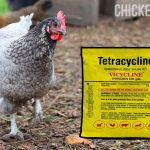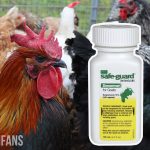Pale Comb in Chickens: Causes And Treatment
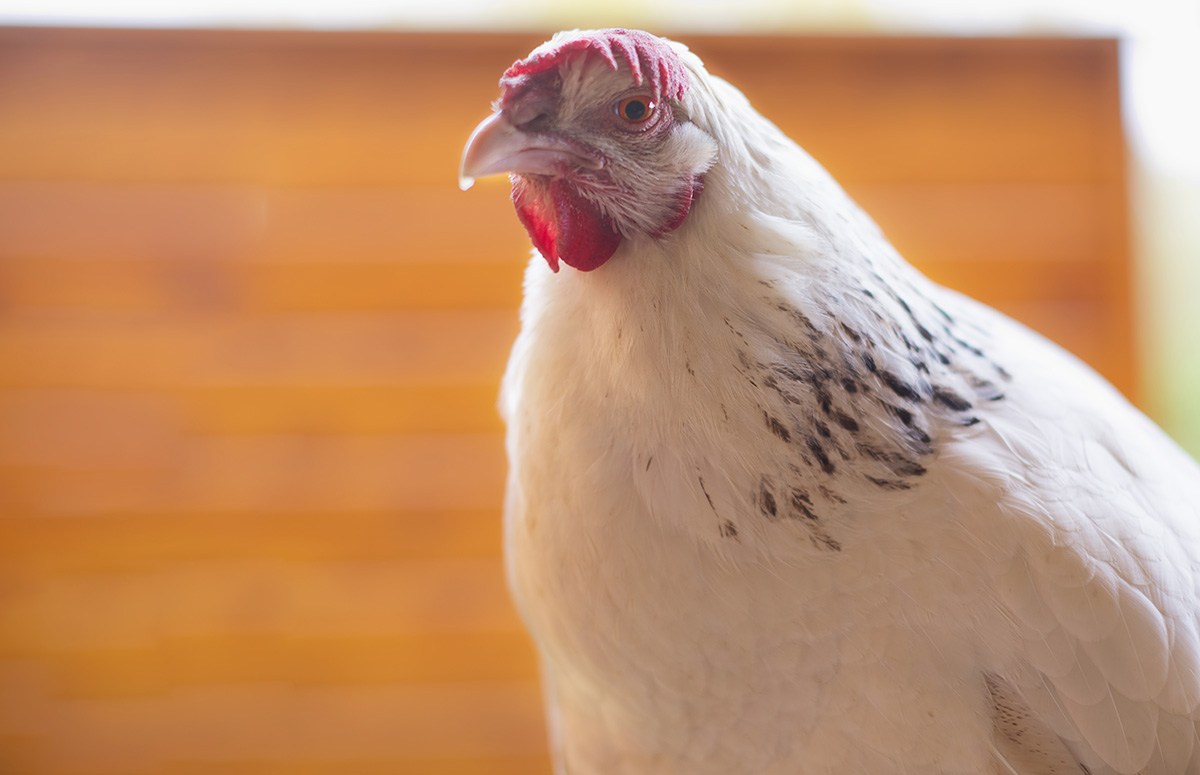

A chicken’s comb is a tell-tale sign of its health, with a vibrant red color signifying a healthy bird. However, when the comb and wattles turn pale, concerns and questions often arise.
Our vet experts break down everything you need to know about pale combs in chickens – from what they mean to why they happen and what you can do about it.
First, let’s understand why a comb can turn pale and what it actually means.
What is a Pale Comb in Chickens?
A pale comb in chickens is a comb that’s lighter in color than the usual vibrant red, often indicating health issues. A healthy comb is rosy red because it’s filled with blood vessels and oxygen. A pale comb indicates poor blood circulation, causing a lack of oxygen and nutrients all over the body.
A well-circulated red comb is also essential for temperature regulation. Chickens don’t have sweat glands like humans, so they use their combs to help release excess heat.
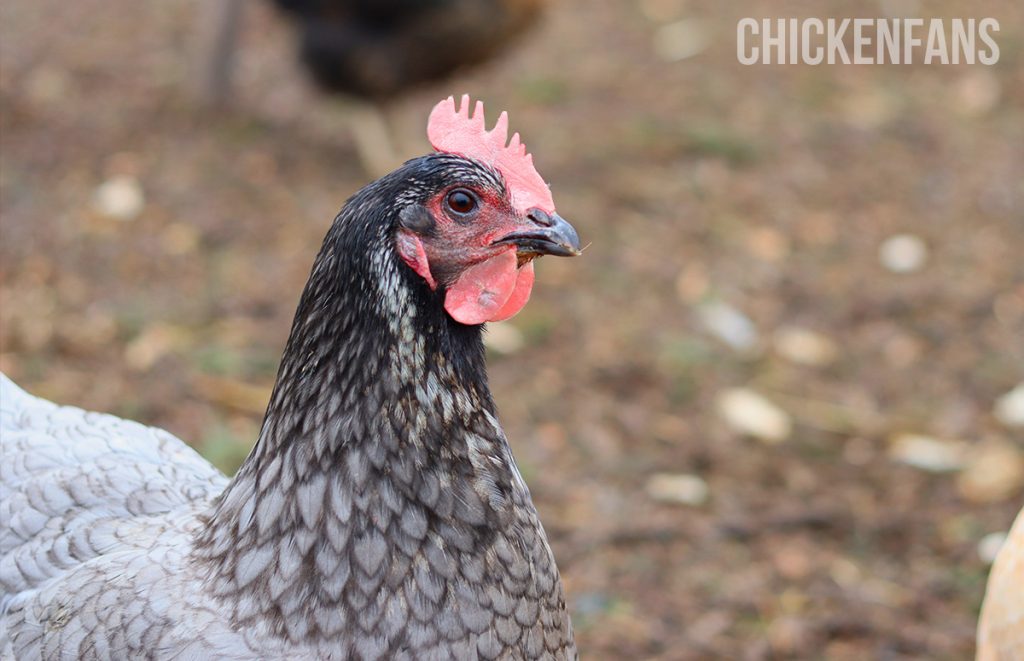
Depending on the chicken breed, the color can differ largely from one bird to the next. Colors like purple, black, gray, or white should always be a matter of concern for chicken owners.
What Causes a Pale Comb in Chickens?
The most common causes of a pale comb in chickens are:
- Nutritional deficiencies
- Internal and external parasites
- Environmental changes
- Viral diseases
- Bacterial diseases
Nutritional Deficiencies
Anemia is the most likely imbalance to cause a pale comb in poultry. It can be caused by external parasites, intense blood loss, and nutritional deficiencies. Besides the pale comb, affected chickens show the following symptoms:
- Weakness
- Reduced egg production
- Reduced weight gain
- Anorexia
Anemia can also be caused by the Chicken Anemia Virus, a viral disease discussed in one of the following sections.
Internal and External Parasites
External parasites, like red mites, scaly leg mites, and lice, are widespread, particularly in larger groups of birds, and the infestation can become so severe that they cause anemia. If a rosy comb turns pale pink, it could signify that your birds have either a mites or lice problem.
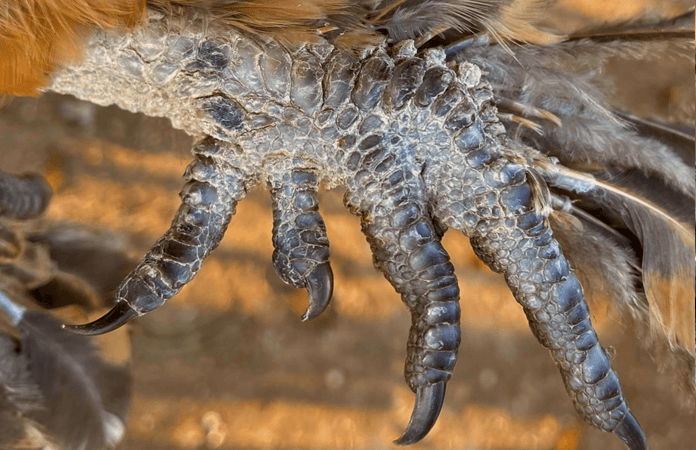
Feather problems can also be a sign of molting, an innocent yearly changing of the feathers. Check your chickens for lice on their feathers or red mites in the coop to be sure whether you are dealing with parasites or molt.
Besides a pale comb, lice or mite infestations cause the following symptoms:
- Decreased activity or, on the contrary, agitation
- Changes in appetite
- A drop in egg production
- Vent with dirty feathers
- Skin scabs and inflammation
When it comes to internal parasites, the most common are all types of worms, such as roundworms (Ascaridia galli), hairworms (Capillaria spp.), and caecal worms (Heterakis gallinarum). They can all cause pale combs.
One of the most severe ones is Coccidia, a protozoan that causes coccidiosis and kills tens of thousands of chickens worldwide every year.
Parasites can be treated with antiparasitic drugs, such as the popular dewormer Fenbendazole or the antiparasitic Ivermectin.
Environmental Changes
Overall, many everyday factors can be attributed to a pale comb, such as:
- Pecking and bullying
- Predators
- Lack of space
- Incorrect lighting
- Lack of fresh water
- Heat stress
- Frostbite
Competition for food, fear of predators, and establishing the pecking order between chickens can stress your birds. A lack of enough space and incorrect lighting in an attempt to make your chickens lay more eggs are two other factors that can cause pale comb.
Stress is associated with depression and lethargy, and these two affect the color of the visible mucous membranes, including the comb. Furthermore, if your chickens don’t have access to fresh or enough water, this can lead to dehydration, another potential cause of a pale comb.
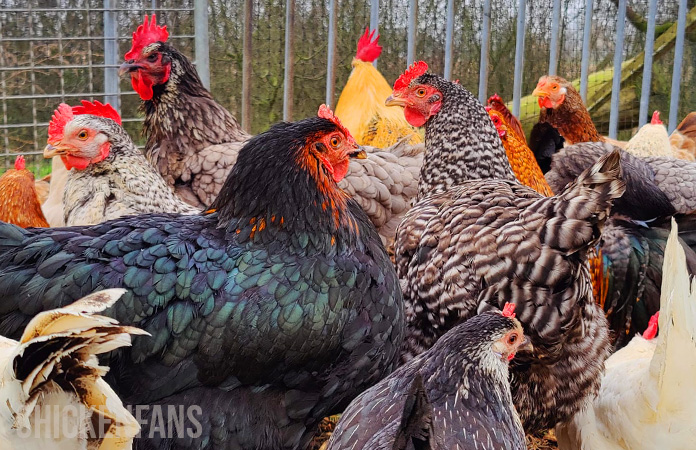
Try to make your chickens’ living space as welcoming and healthy as possible by practicing good hygiene and ensuring that all the birds have equal chances to feed and water and plenty of space.
Frostbite or heat stress are two other factors that cause a pale comb, depression, and overall bad health.
Viral Diseases
Several viral diseases can cause a pale comb in chickens. We’ll discuss the most relevant ones.
Chicken Anemia Virus
The Chicken Anemia Virus is also known as CAV or Blue Wing Disease. It’s transmitted by the Circovirus, usually from the parents to the offspring. The disease is less common today, thanks to responsible chicken owners vaccinating their birds. Besides a pale comb, some possible symptoms of CAV are:
- Pale legs and wattles
- Anorexia and weakness
- Lethargy
- Cyanosis
- Sudden death, especially in young chickens
- Paresis or paralysis
Although some birds can survive this viral condition, they are often stunted in growth. If no treatment attempts are made, most chickens die within two to four weeks after showing the first signs.
Infectious Bronchitis
Infectious Bronchitis is a disease caused by a coronavirus; as its name suggests, its typical signs are nasal discharge, coughing, and dyspnea. The virus is also called the Avian Coronavirus, and the disease is sometimes referred to as a cold.
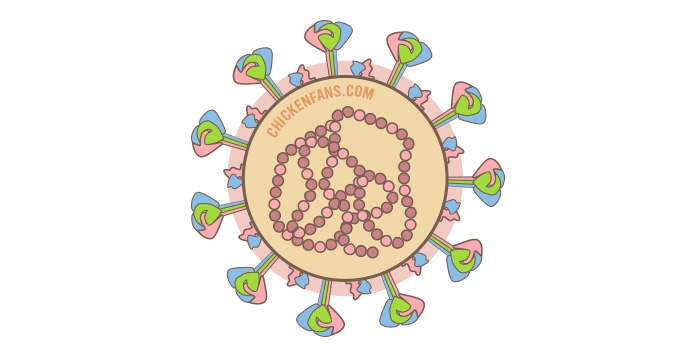
But besides this and a pale comb, it also causes the following:
- Low egg production
- Runny egg whites
- Thin or rough-shaped eggshells
- Facial swelling
- Concurrent bacterial infections of the respiratory tract
There is no treatment for the viral disease, but sometimes antibiotics can help to treat secondary bacterial infections.
Avian Influenza
Avian Influenza, or bird flu, causes mainly respiratory symptoms. Unfortunately, it can be contagious to humans after close contact with infected birds. So besides protecting your flock, you should also practice excellent hygiene when handling the birds and cleaning their enclosures.
Some of the symptoms it causes, besides a pale comb, are:
- Coughing, sneezing, and gasping for air
- Nervous signs such as lack of coordination
- A decrease in egg production
- Lethargy
- Anorexia
- Diarrhea
There is no specific treatment for this condition at this time. Antimicrobials can control secondary bacterial infections of the respiratory tract.
Newcastle disease
An Avian Paramyxovirus causes Newcastle Disease in chickens. Some of the clinical signs that it leads to are the following:
- Pale comb
- Respiratory distress
- Diarrhea
- Nasal discharge
- A lack of coordination in walking
- Lethargy
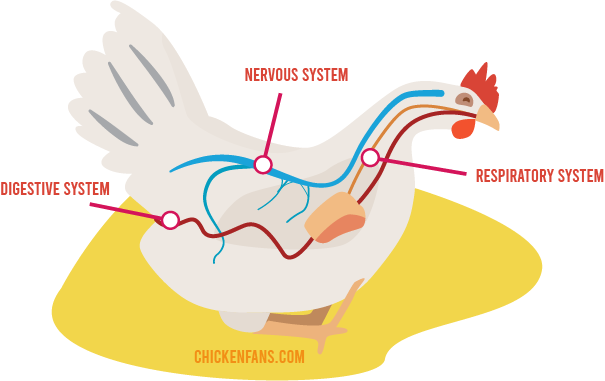
Antiviral treatment is not recommended for Newcastle disease as it is ineffective against this virus. There is a vaccine that can produce an antibody response, so you should talk to your vet about the possibility of them giving your birds shots.
Other therapy options are unavailable, but you can try to minimize the respiratory distress by giving your chickens antibiotics for 3 to 5 days to prevent secondary bacterial infections.
Bacterial Diseases
Chronic Respiratory Disease
Chronic Respiratory Disease (CRD) is a widespread bacterial respiratory disease caused by Mycoplasma gallisepticum (MG).
Although the disease often goes unnoticed, it can cause severe respiratory distress. Mycoplasma infections can progress to the point that they affect a chicken’s entire body. In that case, a wide range of symptoms show up, such as:
- Pale or discolored combs
- Ruffled feathers
- Problems standing
- Coughing
- Nasal discharge
- Swollen eyelids
As this is a bacterial disease, you’ll be happy to know that treatment options exist. They consist of antibiotics such as tetracyclines (mostly doxycycline and oxytetracycline), erythromycin, and tylosin.
No home remedies exist, and some vets actually recommend giving one of these antibiotics for three to five days as a preventative measure once every several months — especially if mycoplasmosis is affecting other birds in your area.
Colibacillosis
This bacterial disease is produced by E. coli and leads to chickens exhibiting a pale and anemic appearance of their wattles and comb.
Other symptoms are:
- Poor appetite
- Stunted growth
- Green diarrhea
- Weakness
- Dehydration
Colibacillosis can be treated with antibiotics such as ampicillin, streptomycin, and tetracyclines. Vets initiate treatment with these medications as soon as they diagnose the disease, especially if they have isolated the particular strain of E. coli that responds to a particular antibiotic.
There is no effective homemade therapy, especially for severe forms of Colibacillosis.
Diagnosis of a Pale Comb in Chickens
As multiple causes can lead to pale combs, your veterinarian will perform a complete anamnesis and ask you as many questions about your chickens as possible.
This includes letting them know their living conditions, whether they might have suffered heat exhaustion or frostbite, competing for food, or having any pathological signs such as diarrhea, lethargy, or respiratory distress.
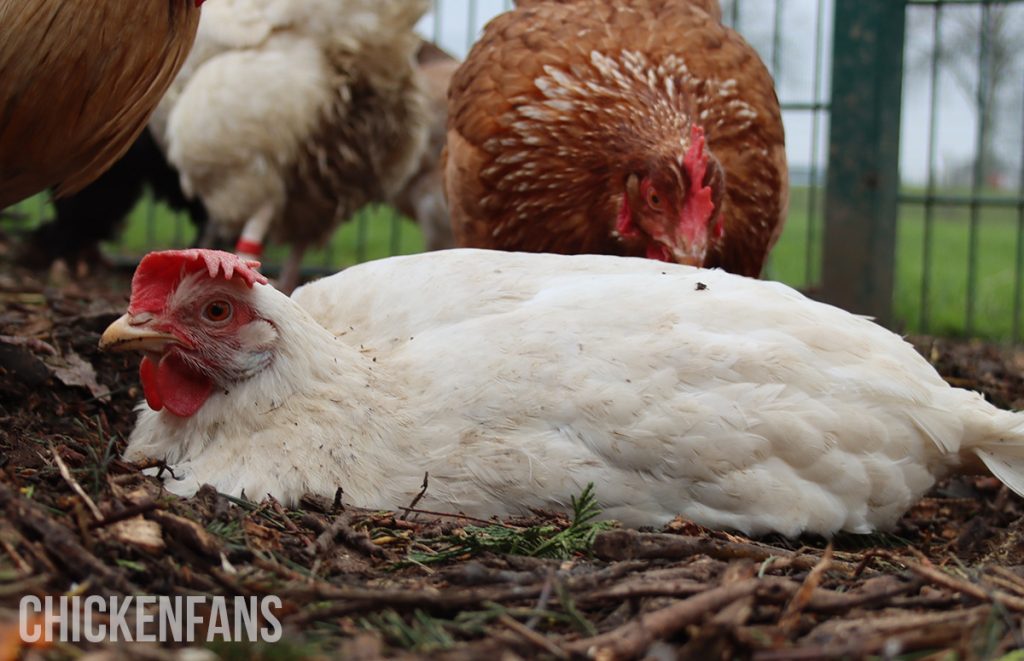
Diagnosing viral diseases is often complicated as it requires expensive tests performed at various labs, some of which might not be available in your area. On the contrary, bacterial diseases can be diagnosed more quickly, sometimes even at your vet’s clinic, if they have a microbiologist available.
Internal parasites can be detected thanks to fecal samples, which you will be asked for, and external parasites can be seen by yourself, so you can even purchase treatments online containing permethrin, for example.
Gordon’s Permethrin Livestock & Premise Spray is a good example, but you need to make sure you’re using the correct dosage, as insecticides can negatively affect chicken’s health if you use a very concentrated solution.
Treatment of Pale Comb in Chickens
The treatment varies a lot depending on the cause of this symptom. As previously mentioned, antibiotics are used for bacterial diseases, dewormers for internal parasites, and insecticides for external parasites. Viral diseases rarely respond to treatments, and specific antiviral medication for certain viruses doesn’t exist.
Ask your poultry veterinarian how to better your chicken’s living conditions to prevent a pale comb from showing up in your birds, along with more severe diseases.
Prevention
While some viral conditions are almost impossible to prevent, there are ways to ensure your birds remain as healthy as possible. Practice excellent hygiene and provide all your chickens with ample space in and outside their enclosures. Every week, use a disinfectant for their coops and completely replace the bedding — as it can also contain external parasites and discharge with viruses and bacteria.
Since pale combs are more common in anemic birds, give your chickens a premix with vitamins and minerals when they’re young. Maintain a schedule of boosting their immune systems regularly even when they become adults.
Frequently Asked Questions
Heat exhaustion is the most likely reason for your chicken’s comb becoming pale and shrinking. To help your chicken recover, ensure access to plenty of fresh, possibly even chilled, water and a cool area to rest. Although it typically doesn’t lead to shrinkage, anemia is another potential cause to consider.
Yes, a broody hen’s comb and wattles become pale. The danger to its health is when the broody period is unsuccessful, and the bird starts showing additional symptoms such as a droopy head and listlessness.
Also known as Favus or ringworm, this condition is caused by Microsporum gallinae, a fungus. It is less common than the diseases mentioned in this article and rarely affects turkeys and chickens. The comb is not pale in this case. Instead, it develops white spots with crusts and scabs. Topical fungicides, such as Miconazole or Enilconazole, are effective in treating this condition.
Summary
The most common causes of a pale comb in chickens range from nutritional deficiencies causing anemia to internal and external parasites, viral and bacterial diseases, and improper environmental changes.
Therapy options are available for some of these complications, but vaccinating your birds against viral diseases is the best way to prevent them from developing potentially life-threatening conditions.
If you want to learn more about the health problems of chickens and how you can treat or prevent them, check out our Health Page, Symptom Checker, and Chicken Behavior list.
Resources:
Bacterial Diseases of Poultry Excluding Respiratory Diseases, Oklahoma Cooperative Extension Service, Joe G. Barry & Delbert Whitenack, https://efotg.sc.egov.usda.gov/references/public/OK/F-9109_OSU_Factsheet_Bacterial_Poultry_Diseases.pdf
Newcastle Disease – Fact Sheet, Government of Canada, https://inspection.canada.ca/animal-health/terrestrial-animals/diseases/reportable/nd/fact-sheet/eng/1330202454619/1330202602677
Mycoplasma gallisepticum Infection in Poultry, Mohamed El-Gazzar, DVM, Merck Veterinary Manual, 2020, https://www.merckvetmanual.com/poultry/mycoplasmosis/mycoplasma-gallisepticum-infection-in-poultry
External Parasites of Poultry, Yarmouth Veterinary Center, https://www.yarmouthvetcenter.com/poultry-lice-and-mites.pml
Poultry and Avian Diseases, A.J. Chaves Hernandez, Encyclopedia of Agriculture and Food Systems, 2014: https://www.sciencedirect.com/science/article/pii/B9780444525123001832



